A Pele da Terra 4
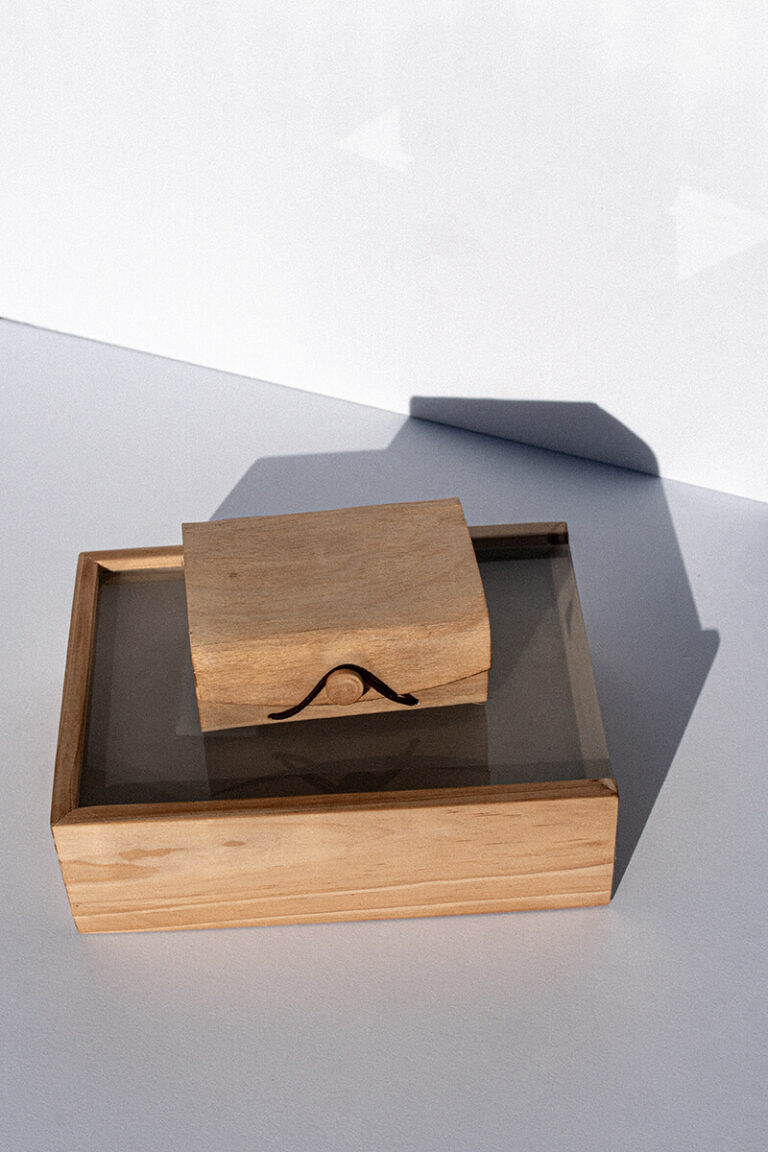
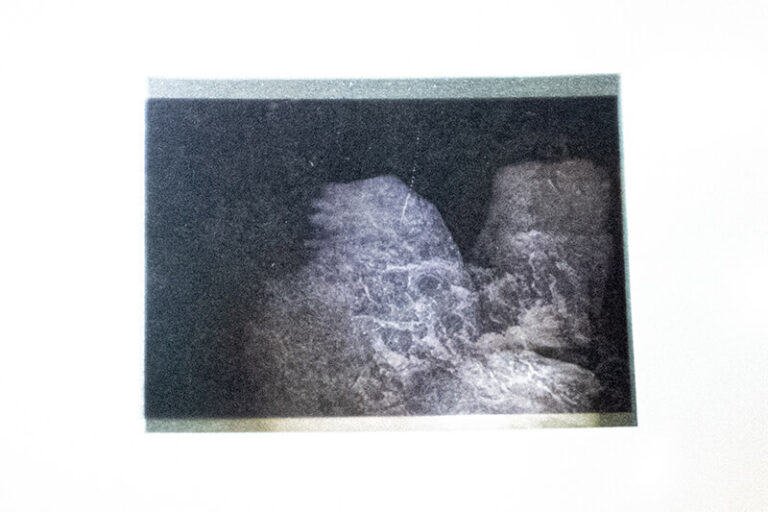



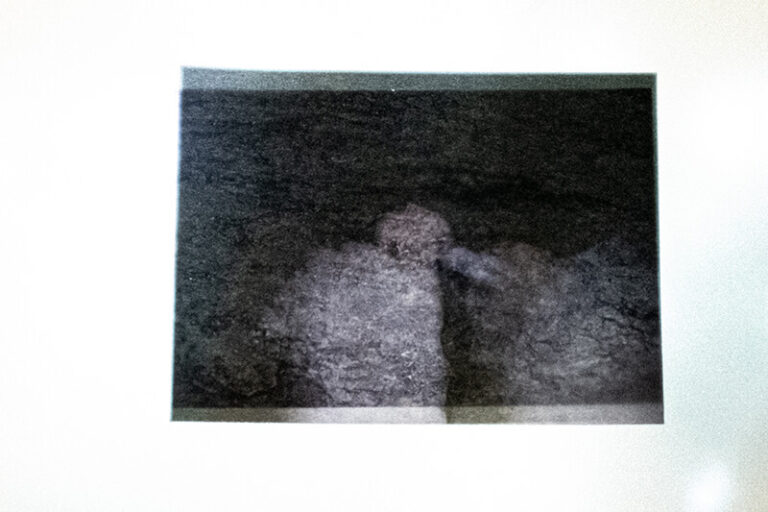

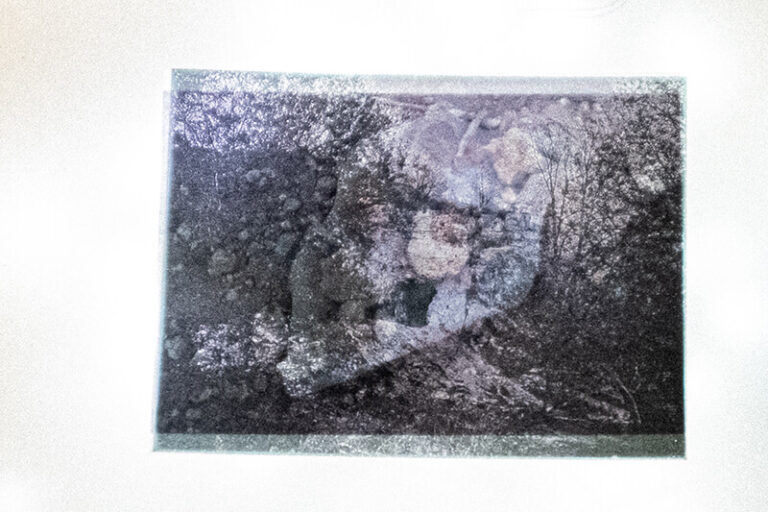


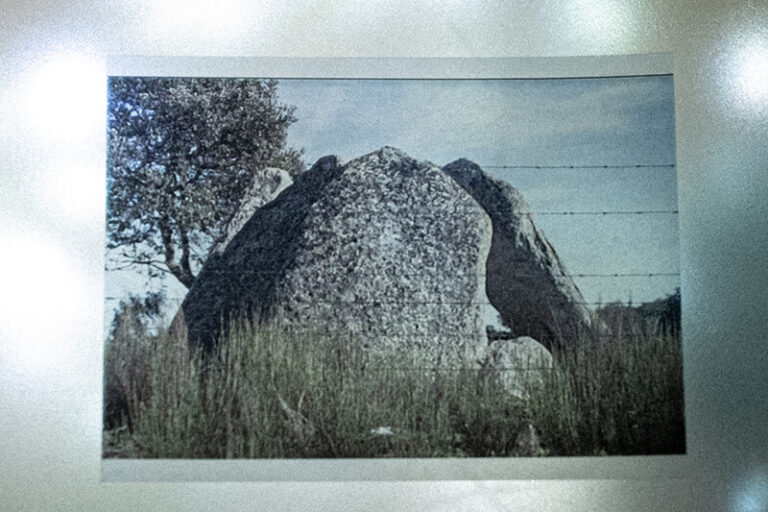





The Skin of the Earth 4
Photo-object, 2023
In this piece, there is some sort of hybridism between the object, the photo and the book. “The Skin of the Earth 4” articulates some procedures already included in previous works, presenting copies printed on translucent paper, stored inside a small box. These copies have been produced in order to be seen over a second box – a light box – created for this specific context. The photos display different scales and varied elements, ranging from minerals to aqueous components, to human figures such as a naked body that camouflages itself within the landscape.
While opening the suitcase containing the images, we are sent to a place that gathers narratives. This small trunk is also a shell, a repository, a purse, a bag, a place to compile and collect – a basket. Speaking of “basket”, we shall evoke Carrier bag theory of fiction, an essay by the feminist writer Ursula Le Guin. In it, Le Guin speculates about the idea of the “container” as one of the first artifacts created by humans, allowing them to survive and collect their food, even before pointed, sharp tools were created to hunt. Reflecting about the shape of the bag and the basket, Le Guin suggests it can be used as a methodology to elaborate narratives: a place to collect elements, to gather things, to store them. According to the author, a novel is a privileged place for that same action: “the natural, proper, suitable shape of a novel could be that of a container, a basket. A book carries works. Words store things. They carry a meaning. A novel is a medicine box, storing things in a particular and powerful relation between themselves and ourselves.”
“The Skin of the Earth 4” deals with that relation between containers that carry images, store narratives and collect chimeras. It invites us to open a box, in order to dig, unveil and handle meanings and visions. Those who come across this object have the chance to handle it and conjugate different landscapes with the sentences contained in the papers. Through that action, an imminently algorithmic combination of new landscapes and meanings is crystalized.
It is a work of construction, arrangement and disarrangement of meanings.
A Pele da Terra 4
Fotolivro caixa, 2023
Nessa obra, há uma espécie de hibridismo entre o objeto, a fotografia e o livro. A Pele da Terra 4 articula alguns procedimentos já contidos nos trabalhos anteriores para apresentar cópias impressas em papel translúcido, guardadas em uma pequena caixa. Essas cópias foram produzidas para serem visualizadas sobre uma segunda caixa, esta de luz, construída especialmente para o contexto. As fotografias apresentam diferentes escalas, variados elementos, desde minerais a ambientes aquosos, até figuras humanas como um corpo nu que se camufla em meio a sua paisagem.
Ao abrir a valise contendo as imagens somos remetidos para um local de coleta de narrativas. Esse pequeno baú é também uma concha, um repositório, uma bolsa, uma sacola, um lugar para se coletar e colecionar — um cesto. E a respeito do cesto, evocamos a escritora feminista Ursula Le Guin em seu ensaio Carrier bag theory of fiction. Ali, Le Guin especula a ideia do recipiente como um dos primeiros artefatos criados por humanos, a fim de manter a sua sobrevivência e recolher os seus alimentos, antes mesmo de ferramentas pontiagudas e afiadas para caça. Pensando o formato da bolsa e do cesto, Le Guin propõe essa forma como uma metodologia para se elaborar narrativas: um local para colecionar elementos e para se colocar coisas e as guardá-las. Segundo a autora, o romance é um lugar privilegiado para essa ação: “a forma natural, apropriada e adequado do romance poderia ser a de um recipiente, uma cesta. Um livro carrega palavras. Palavras guardam coisas. Elas carregam sentido. Um romance é uma caixa de medicamentos, guardando as coisas em uma particular e poderosa relação entre si e conosco.” A Pele da Terra 4 é sobre essa relação de recipientes que portam imagens, armazenam histórias e colecionam quimeras. Ali, somos convidados a abrir uma caixa para escavar, desvendar e manusear sentidos e vistas.
Aquele que se depara com o objeto tem a chance de manuseá-lo e conjugar diferentes paisagens às frases também contidas nos papéis. Nessa ação, cristaliza-se uma combinação iminentemente algorítmica de novas paisagens e sentidos. É um trabalho de construção, arranjo e desarranjo de sentidos.